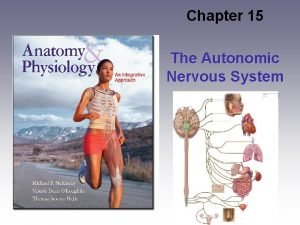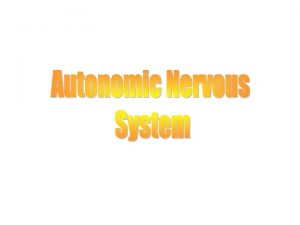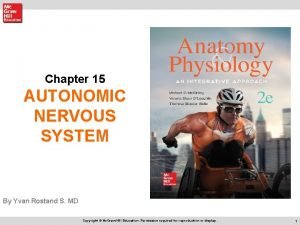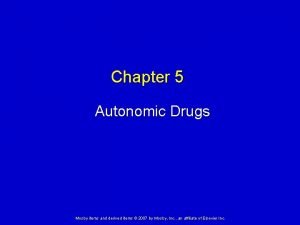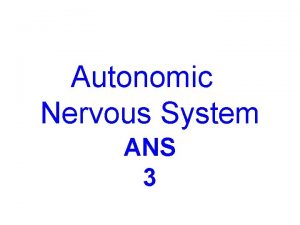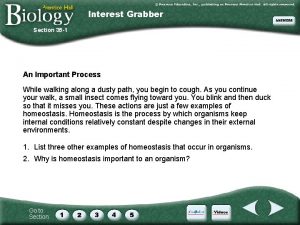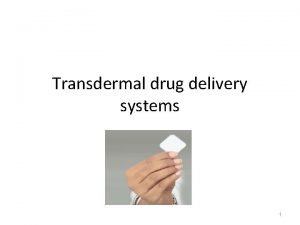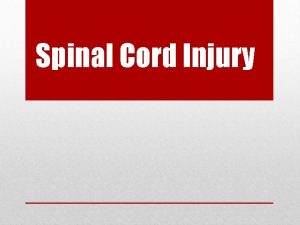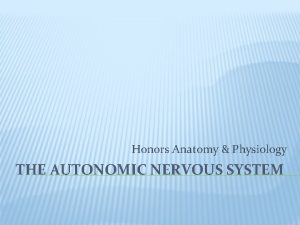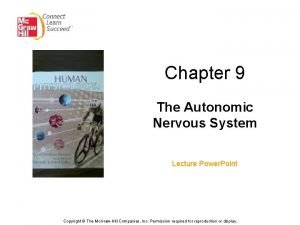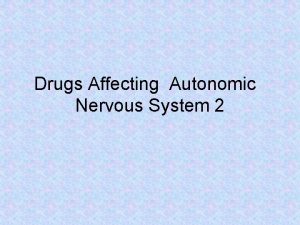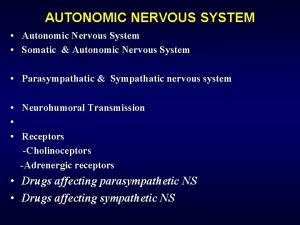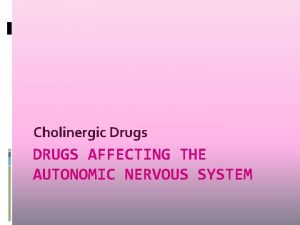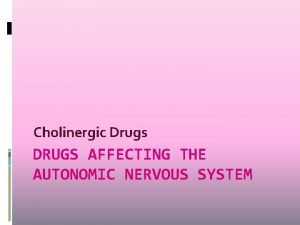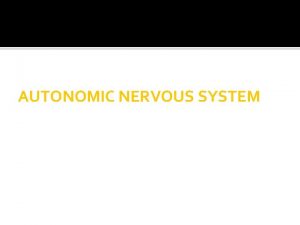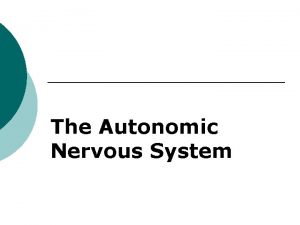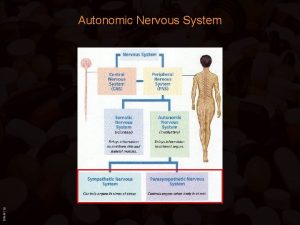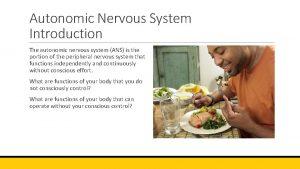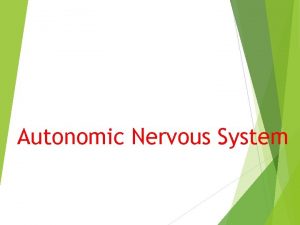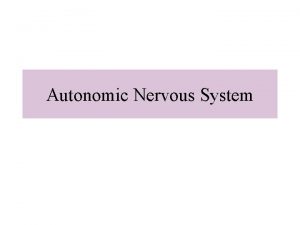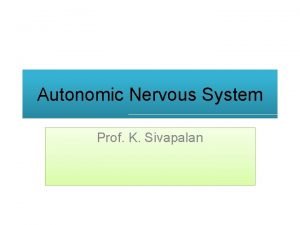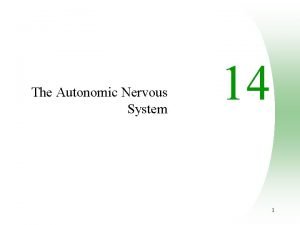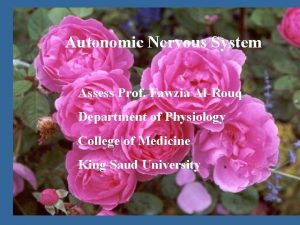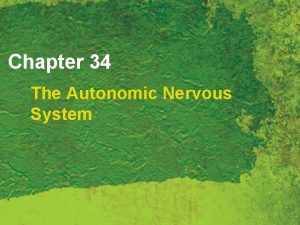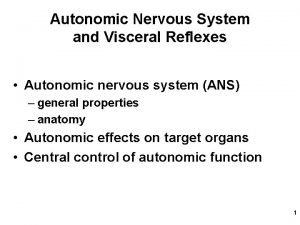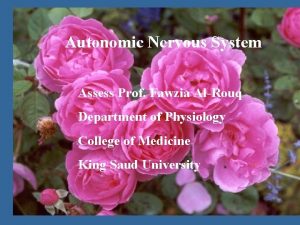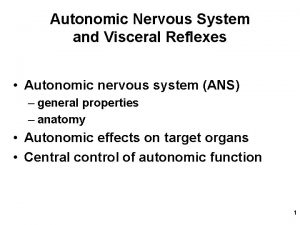Drugs affecting the autonomic nervous system v Autonomic


























- Slides: 26

Drugs affecting the autonomic nervous system


v Autonomic drugs: are drugs that produce their primary therapeutic effect by mimicking or altering the functions of the ANS. v Autonomic drugs are useful in many clinical conditions.

• Two major motor (efferent) subdivisions: autonomic and somatic. • Activities of the ans are not under direct conscious control. • Ans control visceral functions such as cardiac output, blood flow to various organs, and digestion, which are necessary for life. • The somatic subdivision control conscious functions such as movement, respiration.

• Both systems have important afferent (sensory) inputs that provide information regarding the internal and external environments and modify motor output through reflex arcs of varying size and complexity. • These autonomic drugs act either by stimulating or by blocking the action of the autonomic nerves.





Anatomy of the ANS • ANS divided into the sympathetic division and the parasympathetic division. • Neurons originate in nuclei within the CNS and give rise to preganglionic efferent fibers that exit from the brain stem or spinal cord and terminate in motor ganglia.

Sympathetic division • short sympathetic preganglionic fibers and synapse in two chains of ganglia near to and parallel on each side of the spinal cord. • Axons of the postganglionic neuron extend from these ganglia to the tissues that they innervate and regulate.

v the preganglionic nerve endings are branched, enabling one preganglionic neuron to interact with many postganglionic neurons causing activation of numerous effector organs at the same time. v The adrenal medulla, in response to stimulation by acetylcholine, secretes epinephrine, and lesser amounts of norepinephrine into the blood.

Parasympathetic division • parasympathetic preganglionic fibers terminate on ganglion cells distributed near or in the walls of the innervated organs. • Some parasympathetic ganglia located outside the innervated: the submandibular, otic ganglia.

v the preganglionic fibers are long, and the postganglionic ones are short. v In most instances, there is a one-to-one connection between the preganglionic and postganglionic neurons, enabling discrete response of this system.




v afferent fibers run from the periphery to integrating centers in the CNS. v the sensory pathways terminate in the integrating centers of the hypothalamus and medulla and evoke reflex motor activity that is carried to the effector cells by the efferent fibers of the sympathetic and parasympathetic divisions.

Functions of the sympathetic functions Ø response to stressful situations as trauma, fear, hypoglycemia, cold, and exercise. Ø increase heart rate and blood pressure, mobilize energy stores of the body, and to increase blood flow to skeletal muscles and the heart while diverting flow from the skin and internal organs.

Ø sympathetic nervous system tends to function as a unit and often discharges as a complete system, for Ex. during severe exercise or in reactions to fear. Ø emergencies “fight or flight” response. These reactions are triggered both by direct sympathetic activation of the effector organs and by stimulation of the adrenal medulla to release epinephrine.

Functions of the parasympathetic nervous system • it maintains essential bodily functions, such as digestion and elimination of wastes. • it acts to oppose or balance the actions of the sympathetic division and generally predominates the sympathetic system in “rest-and-digest” situations.

Ø the parasympathetic system never discharges as a complete system. Ø parasympathetic fibers innervating specific organs such as the gut, heart, or eye are activated separately, and the system functions to affect these organs individually.

Somatic nervous system • somatic neuron originating in the CNS, travels directly to skeletal muscle without the mediation of ganglia. • under voluntary control, whereas the ANS is involuntary. • somatic responses are faster than those in the ANS.

ANS neurotransmitters • cholinergic fibers: they work by releasing acetylcholine. • noradrenergic fibers: they work by releasing norepinephrine (noradrenaline).


Cholinergic transmission
 Autonomic nervous system def
Autonomic nervous system def Autonomic nervous system skeletal muscle
Autonomic nervous system skeletal muscle Autonomic nervous system consists of
Autonomic nervous system consists of Autonomic nervous system pathway
Autonomic nervous system pathway Spinal cord dorsal and ventral roots
Spinal cord dorsal and ventral roots Autonomic nervous system
Autonomic nervous system The autonomic nervous system controls
The autonomic nervous system controls Nerve ganglia
Nerve ganglia Autonomic nervous system
Autonomic nervous system Parasympathetic preganglionic neurons
Parasympathetic preganglionic neurons Fundamentals of the nervous system and nervous tissue
Fundamentals of the nervous system and nervous tissue Nervous
Nervous Neuron processes
Neuron processes Autonomic drugs
Autonomic drugs Autonomic drugs
Autonomic drugs Section 35-1 human body systems answer key
Section 35-1 human body systems answer key Factors affecting dermal penetration of drugs
Factors affecting dermal penetration of drugs Ion trapping
Ion trapping Autonomic nerveous system
Autonomic nerveous system Nervous system and digestive system
Nervous system and digestive system Endocrine system and nervous system
Endocrine system and nervous system Endo crine gland
Endo crine gland Endocrine system
Endocrine system Choque medular
Choque medular Autonomic reflex arc
Autonomic reflex arc Terminal ganglia
Terminal ganglia Autonomic network management
Autonomic network management





